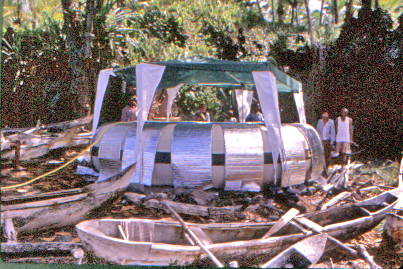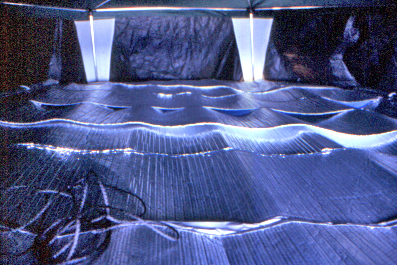Recollections of the Past 30 years pursuing Coelacanths
Jerome Hamlin, creator dinofish.com
By 1999, email communications had been established with the Comoros. Now not only the famous telexes had disappeared from the coelacanth story, but faxes as well. I was in email contact with Said Ahamada who had worked with the Fricke Dive group and its submersible, Jago. He also helped set up the local coelacanth conservation group Ulanga, which assisted in the t shirt distributions. Said lived in Itsoundzou on the southwest coast of Grand Comoro island where, years earlier, I had seen my first coelacanth after it was caught by a village fisherman. The submarine caves and crevices out from the stony beach of Itsoundzou, were a well know coelacanth habitat, and regularly inspected over the years by the Jago submersible doing population surveys. If fishermen were still catching coelacanths this would be a very likely place for it. And so, I reasoned, a perfect place for a life support ressusitation "station," where caught fish could be revived, studied, and released.
There were challenges at that location. There was no electricity in the village and so no way to power pumps and water coolers. The sun was hot in the open areas, and temperatures could rise into the 90's F during the summer months. But I designed a system. Some of our early equipment had been stowed after the set up at Itsandra had been dismantled. Said knew where that was. To set up a tank in an open area, I worked through the ideas of using an inflatible life boat of the type used on sailing yachts, and various kiddie pools. The sides were too low on these. I needed at least three feet to ensure the fish would be completely submerged. Finally, I discovered the world of infaltible garden pools, and came up with the perfect sized model. This was shipped to the Comoros along with rolls of silvered bubble wrap insulation. In the fall of '99, I returned to the scene of so many early adventures.
The villagers were excited by the project and many chipped in time and effort. They also loaned a generator which could be used to run the cool down equipment. In only a couple of weeks, we had the new station up and running, filled with seawater, and passing cool down tests in which we lowered the water temperature to 20C- about 68F over the course of several hours.


Insulation partialy applied along with a patio tent that I had sent over for sun shelter. Fishing dugouts or "pirogues" in the foreground.


Interior pool insulation covering. Water pumps and an AC unit run from a generator would keep the water cold and aerated after start up.

On standby, with a covering tarp, the coelacanth life support station, dubbed "FinWalk One" looked a little like the descent stage of a lunar lander.
